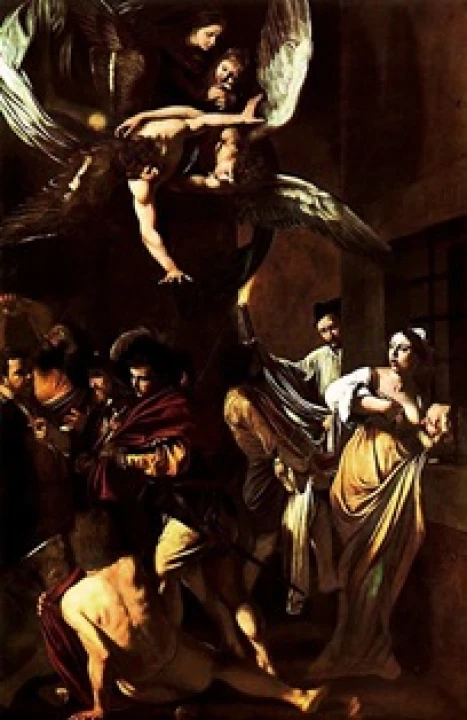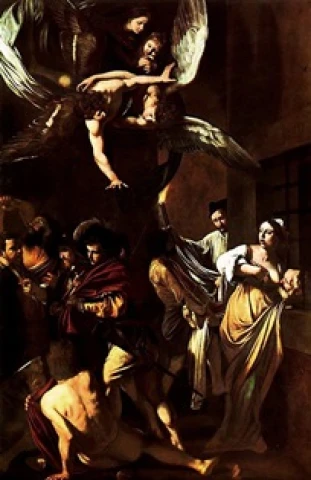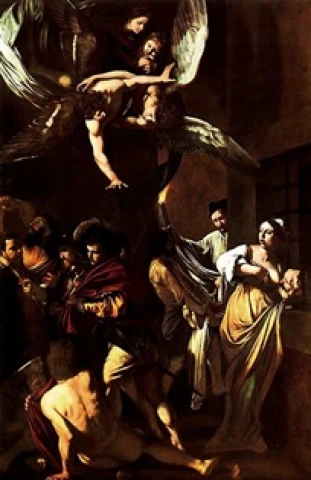WTI Magazine #7 2013 Nov, 29
Author : Enrico De Iulis Translation by: Alessandra Bitetti
In 1606 Michelangelo Merisi, also known as Caravaggio, left Rome to go to Naples.
Rome was no longer a safe place, due to a death sentence which hung over his head. He will never come back again in the capital city that gave him fame, honors and a very bad reputation.
Thanks to the protection of the Roman family Colonna, Caravaggio arrived in Naples in the spring of 1606, creating works aimed to change the concept of painting in southern Italy, which henceforth will consider Merisi as an essential guide for two centuries.
The first painting commissioned to him, thanks to the intercession of Luigi Carafa Colonna, was "The Seven Works of Mercy" for the Congregation of Pio Monte della Misericordia, where Carafa Colonna itself was member.
In this painting the unique Caravaggio style is enhanced and led to levels never achieved before, thanks also to the basic concept of the work, which aims to group all seven works in the same time and in the same place. This created an excited description of the overnight Neapolitan life of the beginning of '600, where in a crossroads of alleys thirteen figures crowd the narrow space of the picture.
The light that illuminates the scene is oblique and external to the painting, and the source from which is radiated can't be seen from us: therefore, we don't know if it comes from a street lamp, another kind of lamp or a natural light. As usual, Caravaggio pushes all characters very close to the edge of the frame, creating a narrowing that reduce the field of action and force the viewer to a sense of invasion of its space by the figures that seem to come out from the painting. An effect emphasized not only by the excitement of the apparently casual "moment", but especially by the realism that gives us with the walls of the palaces and the expressions of the characters.
This sort of dark and narrow theatrical wing hosts the seven works of mercy and they are described as follows: "Burying the dead" at the bottom right where the deacon lights the carriage of a dead body of which we see only the feet. "Visiting the imprisoned" and "giving food to the hungry" are synthesized in the group on the far right with the representation of the episode of Cimon or Pietas Romana, which tell that the old man imprisoned was fed by his daughter Pero's milk, who used to visit him outside the prison and feed him through the bars of the window. "Dressing the naked" and "healing the sick" are in the center of the painting, with the representation of the story of St. Martin of Tours who gave his cloak to a beggar who here represents also the ones being sick. At the bottom left in the twilight there is "Giving something to drink to the thirsty" which presents a figure very similar to Samson which is drinking water from the donkey jawbon, as told in the biblical episode. And finally, "Hosting the pilgrims" with the last two figures remained on the street pavement, identifiable as a pilgrim with the conch on his hat and an innkeeper that indicates a point outside of the painting.
The final extreme excited touch is given by the Virgin Mary with child, coming down from above into a vortex of wings of angels that is tail spinning almost in the middle of the scene, removing the vertical projection of the painting and closing down the only free space remained in this crowded composition.
The lights, the pathos, the compositional and stylistic inventions are what make this painting a masterpiece, a stronghold stylish painting of the seventeenth-century of the southern Italy, still nowadays capable to express great modernity together with expressive and spectacular energy, as just Caravaggio was able to create.





